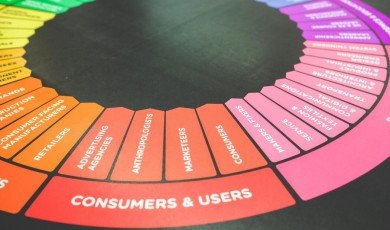The landscape of inbound marketing is changing faster than ever. As customer journeys become more complex and data-driven, marketing teams are under pressure to deliver smarter content, better personalization, and measurable ROI at scale. To keep up, brands are turning to intelligent automation and data-powered platforms that transform how they attract, engage, and delight audiences online.
Modern AI tools are no longer experimental add-ons; they are becoming the central nervous system of growth-focused marketing strategies. From real-time audience insights to hyper-relevant content experiences, these solutions enable teams to work faster, more accurately, and with a level of precision that manual processes simply can’t match.
1. Predictive Analytics for Smarter Lead Generation
Predictive analytics platforms analyze historical data, behavioral patterns, and engagement signals to forecast which leads are most likely to convert. Instead of treating every prospect the same, marketing and sales teams can focus on the most promising opportunities and tailor outreach accordingly.
These systems score leads, identify high-intent segments, and even predict optimal timing for follow-ups. The result is a more efficient funnel, lower acquisition costs, and a stronger alignment between marketing and sales. Over time, the data feedback loop refines models further, making each campaign smarter than the last.
2. Intelligent Content Ideation and Optimization
One of the biggest challenges in inbound marketing is consistently producing fresh, relevant, and SEO-friendly content. Intelligent content platforms mine search trends, user questions, and competitor performance to reveal high-opportunity topics that map directly to audience intent.
These solutions assist with everything from keyword clustering and SERP analysis to content gap identification. They also recommend structures, headings, and semantic phrases that can improve organic visibility. For content teams, this shifts brainstorming from guesswork to a research-driven process that amplifies reach and engagement.
3. Dynamic Personalization Engines
Personalization engines customize on-site experiences, email campaigns, and landing pages in real time based on user behavior and profile data. Instead of generic messaging, visitors see content and offers tailored to their industry, stage in the journey, and past interactions.
This kind of tailored experience can significantly boost click-through rates, time on page, and conversion. Personalization engines continuously test variations, learn what works, and adjust automatically—transforming static funnels into living, adaptive systems that respond to each visitor’s needs.
4. Automated Email and Lifecycle Campaigns
Email remains a cornerstone of inbound marketing, but manually managing complex nurture sequences is inefficient and error-prone. Intelligent automation platforms orchestrate lifecycle campaigns that adapt to how each subscriber engages.
These tools can optimize send times, segment audiences based on behavior, and serve personalized content modules inside each message. They also surface insights such as unsubscribe risk, re-engagement opportunities, and upsell potential, enabling marketers to turn email into a dynamic revenue driver rather than a static broadcast channel.
5. Conversational Assistants for Lead Capture and Support
Chatbots and virtual assistants now play a central role in inbound experiences. Embedded on websites, landing pages, and messaging apps, they guide visitors, answer questions, and capture lead information around the clock.
These assistants route qualified leads to sales, book meetings, and provide instant support—reducing friction and bounce rates. With advanced natural language capabilities, they can recognize intent, suggest relevant resources, and trigger follow-up workflows automatically, making every conversation a potential step forward in the buyer journey.
6. Social Listening and Audience Insight Platforms
Social listening tools monitor conversations across platforms to reveal what audiences care about in real time. Instead of relying solely on periodic surveys, marketers gain ongoing visibility into sentiment, emerging topics, and competitor perception.
These insights inform content strategy, messaging, and campaign timing. They also help identify advocates, influencers, and communities where your brand can add value. This continuous feedback loop enables more authentic engagement and quicker response to shifts in market expectations.
7. Creative Assistance for Copy and Visuals
High-quality creative execution is essential to stand out, but it can be time-consuming. Intelligent creative tools now support marketers in drafting copy variations, refining tone, and producing on-brand visual assets at scale.
They streamline A/B testing by quickly generating multiple headline or call-to-action options, and help maintain consistent voice across channels. For design, they accelerate the production of ads, social graphics, and content visuals that match brand guidelines—enabling teams to move from concept to campaign much more rapidly.
8. SEO Automation and Technical Monitoring
While strategic thinking remains crucial, much of technical optimization can be automated. SEO-focused platforms crawl websites to detect issues like broken links, slow-loading pages, and metadata gaps that hurt organic performance.
They also track rankings, detect algorithm-impacting changes, and suggest optimization priorities based on impact potential. For inbound teams, this means fewer technical blind spots and more time to focus on strategy, content, and audience experience rather than routine maintenance.
9. Performance Analytics and Attribution Intelligence
Measuring inbound success is no longer just about last-click conversions. Advanced analytics and attribution systems map the full customer journey across touchpoints—search, social, email, content, and direct engagement.
These tools reveal which interactions truly contribute to pipeline and revenue, not just vanity metrics. By surfacing the highest-impact channels, campaigns, and content assets, they help marketers allocate budgets wisely and refine strategies based on real business outcomes.
Conclusion: Building a Future-Ready Inbound Engine
As digital competition intensifies, inbound marketing can no longer rely on intuition alone. Data, automation, and intelligent systems are reshaping how brands earn attention, build trust, and convert interest into lasting relationships. The organizations that thrive will be those that integrate these capabilities into a cohesive, always-learning growth engine.
Adopting advanced platforms is not just about efficiency; it’s about unlocking new levels of relevance and responsiveness that modern audiences now expect. By embracing the next generation of intelligent solutions across analytics, content, personalization, and engagement, marketers can create inbound strategies that are not only scalable, but truly future-ready.






